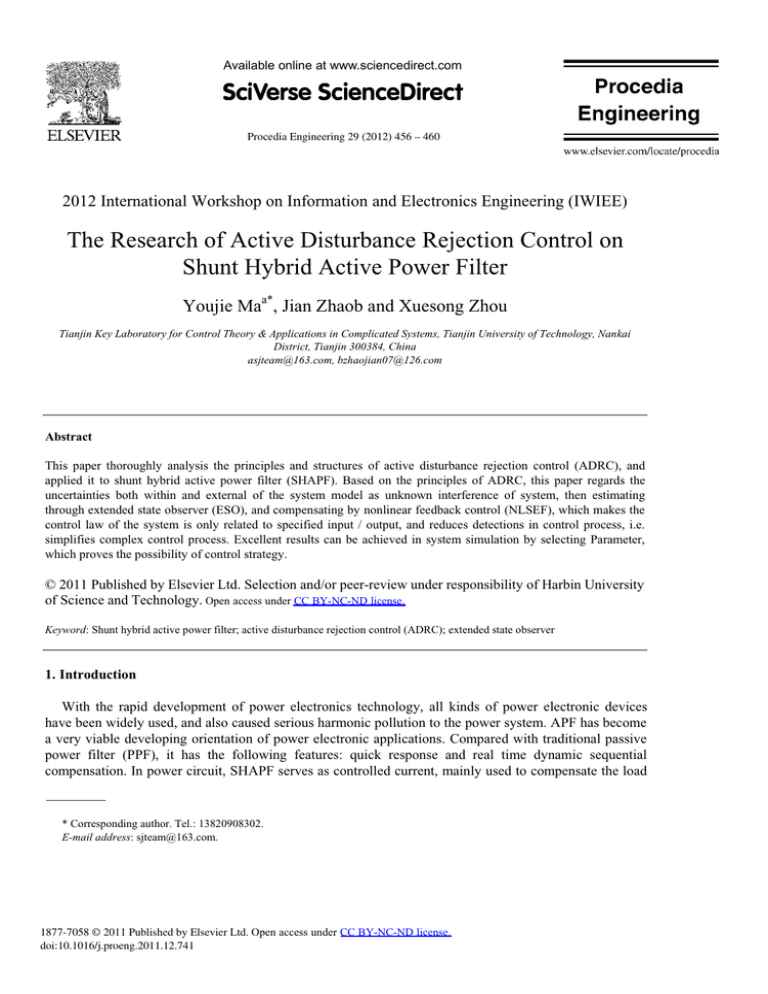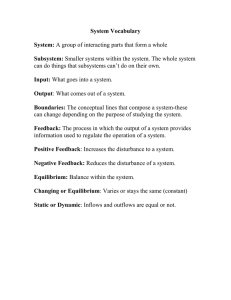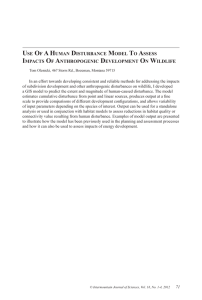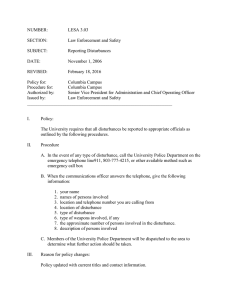The Research of Active Disturbance Rejection Control on Shunt
advertisement

Available online at www.sciencedirect.com Available online at www.sciencedirect.com Procedia Engineering Procedia Engineering 00 (2011)29000–000 Procedia Engineering (2012) 456 – 460 www.elsevier.com/locate/procedia 2012 International Workshop on Information and Electronics Engineering (IWIEE) The Research of Active Disturbance Rejection Control on Shunt Hybrid Active Power Filter Youjie Maa*, Jian Zhaob and Xuesong Zhou Tianjin Key Laboratory for Control Theory & Applications in Complicated Systems, Tianjin University of Technology, Nankai District, Tianjin 300384, China asjteam@163.com, bzhaojian07@126.com Abstract This paper thoroughly analysis the principles and structures of active disturbance rejection control (ADRC), and applied it to shunt hybrid active power filter (SHAPF). Based on the principles of ADRC, this paper regards the uncertainties both within and external of the system model as unknown interference of system, then estimating through extended state observer (ESO), and compensating by nonlinear feedback control (NLSEF), which makes the control law of the system is only related to specified input / output, and reduces detections in control process, i.e. simplifies complex control process. Excellent results can be achieved in system simulation by selecting Parameter, which proves the possibility of control strategy. © 2011 Published by Elsevier Ltd. Selection and/or peer-review under responsibility of Harbin University of Science and Technology. Open access under CC BY-NC-ND license. Keyword: Shunt hybrid active power filter; active disturbance rejection control (ADRC); extended state observer 1. Introduction With the rapid development of power electronics technology, all kinds of power electronic devices have been widely used, and also caused serious harmonic pollution to the power system. APF has become a very viable developing orientation of power electronic applications. Compared with traditional passive power filter (PPF), it has the following features: quick response and real time dynamic sequential compensation. In power circuit, SHAPF serves as controlled current, mainly used to compensate the load * Corresponding author. Tel.: 13820908302. E-mail address: sjteam@163.com. 1877-7058 © 2011 Published by Elsevier Ltd. Open access under CC BY-NC-ND license. doi:10.1016/j.proeng.2011.12.741 457 Youjie Maand et al. / Procedia Engineering 29 (2012) 456 460 000–000 Youjie Ma, Jian Zhao Xuesong Zhour/ Procedia Engineering 00–(2011) 2 reactive power and active power, absorb current harmonics and negative sequence and zero sequence components of industrial frequency current et al..[1] It regards the model perturbation as internal disturbance, and compensate together with the external system disturbance as a system disturbance [2]. With further applications of modern control technology in power electronics [6], this article applied ADRC control technology to the new object -APF in power electronics technology, and conducted a simulation study. 2. ADRC ADRC consists of three parts: nonlinear tracking differentiator (TD) extended state observer (ESO) and nonlinear feedback control (NLSEF). 2.1. TD TD is a device which can: input signal v ( t ) , it will output two signals, z1 and z2 , z1 tracks v ( t ) , while z 2 = z1 , thus regards z2 as a ‘differential approximation’ [7]. The role is arranging the transition process based on the reference input v ( t ) and the constraints of controlled object, and then get smooth input signal, and propose the dynamic link of this transition process’ derivative. Discrete form of TD: ) z11 (t ) + hz22 (t ) ⎧ z11 (t + h= ⎨ ) z22 (t ) + hfst ( z11 (t ) − v(t ), z22 (t ), r , h) ⎩ z22 (t + h= Where (1) v ( t ) is the input signal, h is the integration step, fst ( z11 , z12 , r , h) is a nonlinear function. 2.2. Extended state observer (ESO). ESO is core part of ADRC. The system controller requires only input and output as a source of information, it can not only get all estimates of states, but also estimate the uncertainty model and the amount of real-time role in outside interference by ESO, so that the uncertainty of the object could be compensated in the feedback, in order to achieve the purpose of reconstructing the object. The form ESO is as following: z& 2 1 z 22 − β 21 g 1 (e ) ⎧= ⎪ ⎪⎪ : z 2 n +1 − β 2 n g n ( e ) + b0 u ⎨ z& 2 n = ⎪ z& − β 2 n +1 g n +1 ( e ) 2 n +1 = ⎪ ⎪⎩ e z 21 − x (t ) = (2) ( n −1) So z2 n +1 is Real-time estimation of total disturbance f ( x, x& ,..., x , t ) + w(t ) + (b − b0 )u , b0 is estimate value of b . ESO has good tracking capabilities for output states of the observed system; its dynamic quality depends on the gain β ,and the faster the response is, the higher accuracy of estimates is, however, the real-time estimates of the total disturbance are restricted to certain conditions. For example, when frequency of outside interference is high, the capacity of ESO to track the total disturbance is limited. ID 861839 Title TheResearchofActiveDisturbanceRejectionControlonShuntHybridActivePowerFilter http://fulltext.study/article/861839 http://FullText.Study Pages 5






